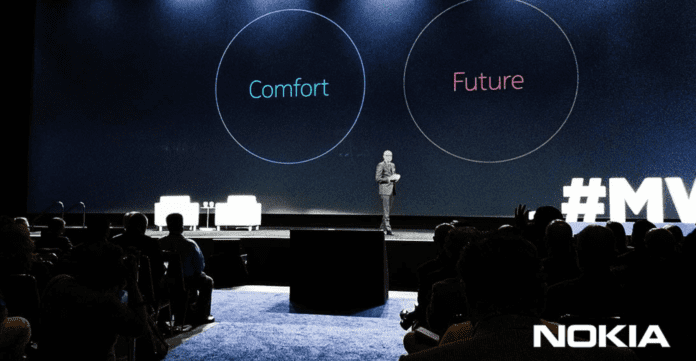What does an automated world mean for the workforce?
Rajeev Suri, chief executive officer of Nokia, has been consistently spreading the Industry 4.0 message in meetings with customers, employees and during major industry events. He followed suit last week at Mobile World Congress Americas in Los Angeles, telling attendees during his keynote session, “To unlock the value of 5G, you will need to build a strong enterprise offering for energy, for health, for manufacturing. And if you still doubt the business case, consider this: with 5G, operators will have something webscale and OTT players do not—a widespread, hyperlocal presence with tons of data gleaned from 1 million linked devices per square kilometer. In a data-driven world, that’s a goldmine.”
Nokia was an early mover in articulating the benefits 5G connectivity can bring beyond the consumer space. Suri’s colleague Marcus Weldon, Nokia’s chief technology officer and president of Nokia Bell Labs, has characterized the long-term goal of 5G as effectively creating time through the automation of everything. But, while Nokia is articulating 5G use cases tailored to serve high-value enterprise and industrial verticals, operator focus, particularly in the U.S., seems trained on standing up consumer services marked by bigger data pipes and faster speeds, which is just one aspect of the totality of what 5G can do.
In an interview with RCR Wireless News, Suri provided some insight on how operators can move from 5G for consumers to industries and discussed what widespread industrial automation will mean for society over time.
“The operators are, by and large, trying to focus on the consumer opportunity first because that’s immediate and it’s what they do best,” Suri said. “But there are a number of operators that are also looking at the industrial opportunity.”
The logic from an operator perspective is, “I’ll start with consumer, I’ll figure out industrial as we go along. In some countries I’ll do both at the same time. Maybe the best way to learn the verticals and use cases is to partner up. The sequence is parallel. There is more potential overall as an industry to articulate it, understand it and not everything has to wait to 5G.”
Suri noted challenges to developing enterprise/industrial offerings related to both the availability of the spectrum needed and organizational issues. “The operators have to enrich their enterprise channel and make it stronger because of lot of this is not about selling point solutions. It’s about selling full solutions, enterprise-grade with a level of SLA guarantees. The impediment is just organizationally being able to have the right channel, up-skill that channel for these enterprise solutions. We’re not talking about just SIM cards and connectivity.”
But these challenges are manageable and, over time, 5G will come to bear and create new levels of efficiency and productivity on the way to broad automation. But what does that mean for the global workforce? Suri said research suggests that digital industries in the past two decades have created more job growth than physical industries.
“With automation, with artificial intelligence, we believe in a world of human-augmented intelligence. It’s more like AI will help humans get more efficient and better. New kinds of jobs will be created. There will be a new mix of occupations. What does that mean in terms of societal impact? We’ve got to cater to that shift of occupation and up-skilling and re-skilling. I’m not going to necessarily say there will be job destruction…but there will be displacement and that’s what we have to deal with.”

